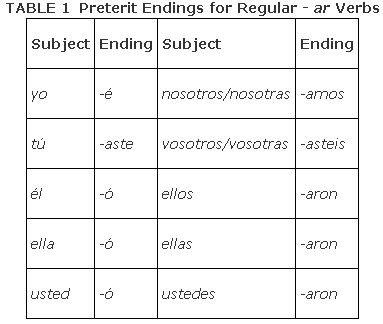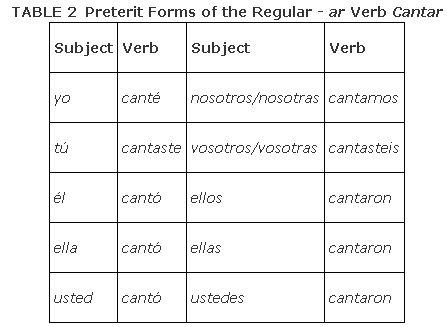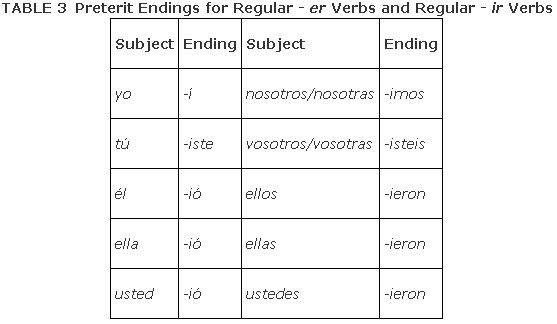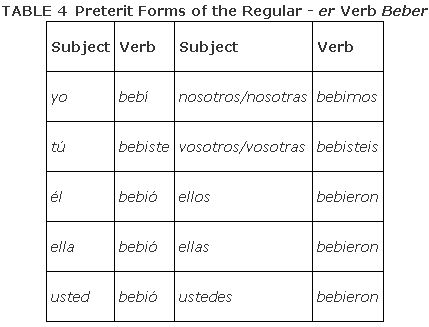Regular Verbs in the Preterit
Verbs that are regular in the present tense are not necessarily regular in the preterit. Because the preterit irregulars are presented later, only regular verbs in the preterit are used as examples in this section. To conjugate a regular verb in the preterit tense, remove the infinitive ending and add the preterit endings presented below. For an ‐ar verb that is regular in the preterit, use the endings in Table
. Because ‐er and ‐ir verbs are conjugated exactly alike in the preterit tense, both use the endings in Table
.

In the present tense, the yo form ends in ‐o, but in the preterit tense, the él, ella, and usted forms end in ‐ó. Be sure to notice the accent mark on the preterit forms because that is the only difference between the yo form of the present tense and the él form of the preterit tense. There is also an accent mark on the yo form of all regular preterit verbs. Pronounce these words with the stress on the last syllable.
Notice that regular ‐ar verbs have the same nosotros/nosotras form in the preterit as they do in the present tense. The only way to know whether it is in the preterit or present tense is by considering the context of the sentence.
Cantar (to sing) is a regular verb in the preterit, so it serves as a good example. Table is a conjugation chart for the verb cantar in the preterit tense. Because the preterit is a past tense, these forms translate to the English past tense form: “sang.”

As you can see in Table , the endings for ‐er and ‐ir verbs are the same for regular verbs in the preterit tense.

The nosotros/nosotras form of an ‐ir verb is exactly the same in the present and preterit tenses.
Beber (to drink) is a regular ‐er verb in the preterit. The preterit forms in Table translate to the English past tense form: “drank.”

The verb vivir (to live) is a good example of a regular ‐ir verb in the preterit. Table serves as a sample conjugation for all ‐ir verbs in the preterit.

|
|
|
|
|
|
|
|
|
|
|
|
|
|
|
|
|
|
|
|
|
|
|
|
|
|
|
|
|
|
|
|
|
|
|
|
|
|
|